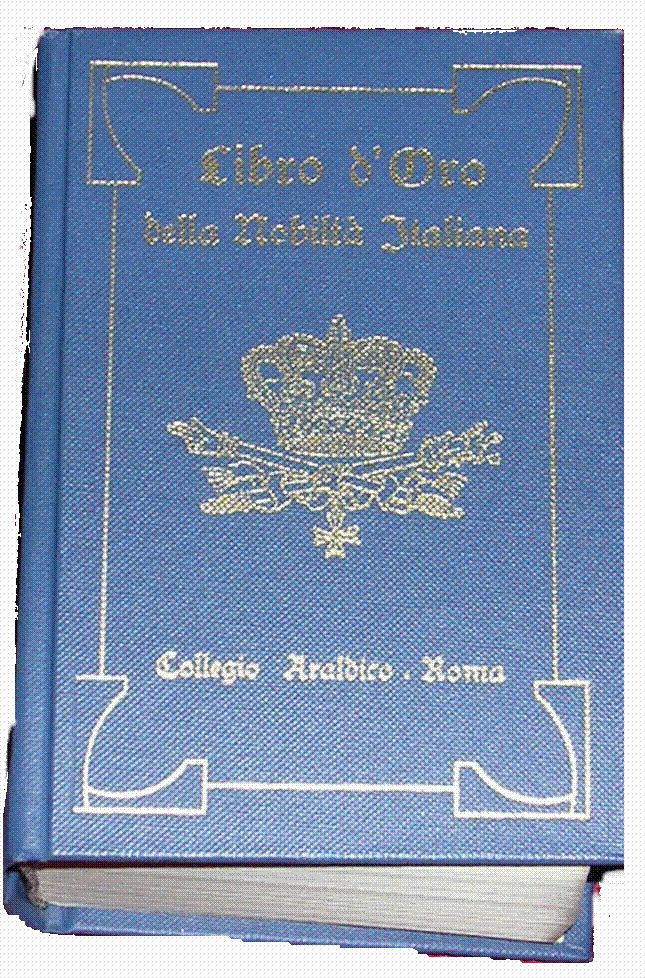 | ||
Similar Enciclopedia Storico‑Nobiliare Italiana, Almanach de Gotha, Press Here | ||
Il gladiatore vs libro d oro srl
The Libro d'Oro (Italian: Golden Book), once the formal directory of nobles in the Republic of Venice (including the Ionian Islands), is now a privately published directory of the nobility of Italy.
Contents
- Il gladiatore vs libro d oro srl
- Libro d oro the results of globalization and the fake worth of money
- References
Following the Second World War and the decision by a referendum to abolish its monarchy, democratic Italy officially ended its recognition of titles and hereditary honours in its new Constitution, so ceased to maintain the Consulta Araldica, an official government body regulating the nobility which had been a department of the Ministry of the Interior. All titles are now not recognized. Only those families bearing titles before 28 October 1922 (i.e. before the rise to power of Fascism) were permitted to use predicates of such titles as a part of their names. These laws did not apply to the nobility of Rome, insofar as their titles had been created by the Pope, when he was a sovereign head of state (i.e. until 20 September 1870). After a period of uncertainty, the Italian aristocracy continued to use their titles in the same way as they had in previous centuries. This behaviour was cemented by the continued publication of Il Libro d'Oro della Nobiltà Italiana, published as much to prevent self-styled aristocrats from social climbing as to list the established nobility.
The Libro d'Oro della Nobiltà Italiana ("Golden Book of the Italian Nobility") is regularly published by the Collegio Araldico of Rome. It lists some of Italy's noble families and their cadet branches. First published in 1910, it includes some 2,500 families, and may not be considered exhaustive. Included are those listed in the earlier register of the Libro d’Oro della Consulta Araldica del Regno d’Italia and the later Elenchi Ufficiali Nobiliari of 1921 and of 1933. The Libro d'Oro should not be confused with a social register - wealth, status and social contacts are of no consideration on the decision as to whether a person may be included in the book, the only consideration is the blood or marital relationship to the head of a noble family. Nor is it a peerage reference such as those published in Great Britain (e.g., Debrett's Peerage & Baronetage, Burke's Peerage). The currently published Libro d'Oro is not an official publication of the Italian state, which currently does not have a civic office to recognise titles of nobility or personal coats of arms. The most recent (24th) edition of Libro d'Oro della Nobiltà Italiana was published in September 2010.
In addition to the Libro d'oro of Venice, such books had existed in many of the Italian states and cities before the unification of Italy. For example, the Libro d'Oro of Murano, the glass-making island in the Venetian Lagoon, was instituted in 1602, and from 1605 the heads of the Council of Ten granted the title cittadino di Murano to those heads of families born on the island or resident there for at least twenty-five years. A Libro d'Oro was also compiled on each of the Ionian Islands as a nobiliary of the members of local Community Councils (Zante 1542, Corfu 1572 and Cephalonia 1593) After the Ionian Islands were conquered and annexed by Napoleon Bonaparte in 1797, the Libro d'Oro was ceremoniously burned
In the reformed Republic of Genoa of 1576 the Genoese Libro d'Oro, which had been closed in 1528, was reopened to admit new blood.
By extension, a Libro d'Oro is a by-name for any nobiliary directory, as when Al. N. Oikonomides refers to "the recently published 'libro d'oro' of the wealthy ancient Athenians (J.K. Davies, Athenian Propertied Families 600-200 B.C. (Oxford 1971)".
